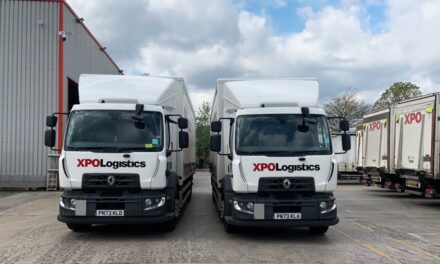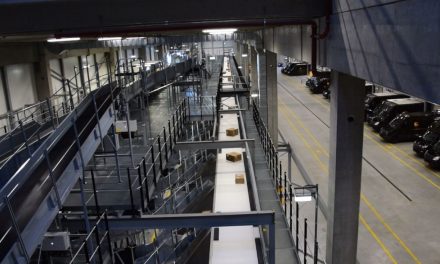
Scandanavian Survivor – How Wilson Logisitics avoid a merger
Scandanavian Survivor – An article from Cargovision – July 2001
A quick profile of Wilson Logistics
The Wilson Logistics Group sells airfreight, seafreight and logistics services through a network of subsidiary companies in 29 countries. A total of 2,145 employees work in 130 offices. Net sales reached SEK 5.5 million ($550 million) in the year 2000, on which a profit of SEK 115 million ($11.5 million) was recorded.
The net sales breakdown per business area in percentage terms during the year 2000: airfreight 50%, seafreight 37%, logistics 9% and sea/air 4%. The net sales per region: Northern Europe including UK 37%, Central Europe and Middle East 19%, Asia 17%, North America 140%, Latin America 8%, and Australasia 5%
The customer base comprises 27, 000 clients of which the largest include multinational Scandinavian manufacturers such as Atlas Copco, Bang & Olufsen, Lego, SKF and Volvo. New customers last year included Electrolux and ITT Flygt.
Wilson offers transport solutions with different lead times: Express, Priority, Regular and Economy in the airfreight, as well as Full Container Load (FCL) and Pipeline in the seafreight. The service range within the Logistics area includes purchasing, supply chain management, distribution and outsourcing.
Notable IT-solutions within the eWilson programme are Wiltrack for customer monitoring of consignments, Wilshipper for customer booking via Internet, Wilnet which is Wilson's Intranet, and Wildoc, a web-based system for clients lacking their own EDI links.
First, a little history, please. Wilson is rather an old name?
158 years old, to be precise. We were founded in Gothenberg in 1843 by John West Wilson from Hull as a shipping and trading company. Wilson Line's ships took the majority of Swedish emigrants across the North Atlantic to the USA. Forwarding became increasingly important to the company from the 1920s. It was family-owned all the way until 1983, when the C W Kjellberg family sold Wilson & Co to the Swedish forwarding and road haulage Bilspedition Group.
So what happened to Wilson under Bilspedition?
Bilspedition was primarily a road haulage operator, and we continued as a separately-
managed mainly ocean forwarding operation. When Bilspedition purchased the Scansped Group, the airfreight business of ScanFlight belonging to Scansped, and ISA, already belonging to Wilson was gradually merged ihto an enlarged Wilson.
I came to Wilson from ScanFlight, having been in airfreight ever since I graduated from the University of Gothenberg in 1977. I come from a 'shipping family', in fact. Both my father and grandparents worked for Brostroem, the major Swedish shipping company.
Bilspedition later became known as BTL (Bilspedition Transport Logistics), but made some unwise investments in non-core activities during the 1990s. Moreover, during that time the Board really didn't understand our line of forwarding business and consequently turned down our repeated proposals for expansion, such as the aquisition of Jacky Maeder in Switzerland.
Then BTL's new part-owner Finnlines decided to trade its shares to the Stinnes group in Germany, in exchange for Stinnes' shares in the Baltic shipping company Poseidon. Stinnes made a further investment in BTL, and eventually gained full control. This opened up the prospect of the Stinnes-owned Schenker being merged with BTL, including Wilson.
Why didn't this happen?
I guess we must consider ourselves lucky, that Stinnes were open-minded enough to listen to our objections at the time. On paper, a merger was the obvious choice. But not so in real life, at least not from our perspective. The risks were many, whereas the prospects of going alone held much greater promise. Backed up by all the necessary facts and figures, we managed to convince Stinnes that a successful outcome to such a shotgun-marriage was unlikely.
What were your objections to the merger?
We had built a skilled, experienced work-force of some 1,300 world-wide – nearly half of whom were women, I might add. In all probability, we would have lost dose to half of them due to the synergistic savings of workforce, that any merger of two similar companies aims to achieve. Adding to that the business risk in terms of probable losses of business from customers and agents not agreeing to a merger with Schenker were significant so 1 +1 was potentially less than 2.
When Stinnes accepted our arguments, it was inevitable that Wilson would have to be sold, to avoid future intra-group competition with Schenker International. In July 1999, we finally found new owners in the shape of Nordic Capital, a Swedish yen-ture capital company.
How have you fared since then?
We think that our latest results prove that remaining independent was the right strategy. We have a very professionally creative and inspiring team of Members of the Board, together with dearly defined goals, Wilson Logistics has really taken off during the last 18 months.
Having already acquired Canadian-based Combined Logistics International (formerly the Concorde sea-air operation) plus the air and sea division of Castelletti Overseas in 1999, we added KEL Logistics in the Netherlands in 2000 But we are clear that road haulage and railway transport is outside our scope of activities. We will concentrate on sea and air freight and related 1ogistics services. When necessary, Wilson will always find willing suppliers of the land-based transport modes. For instance, we have an alliance with Swedish state railways SJ Cargo.
We have made the fundamental decision that Wilson will remain a non-asset based company, not owning any transport fleets, major equipment and real estate. Thus we create a lightweight balance sheet with a high return on investment, unencumbered by capital-heavy assets.
But how can you compete with the big players from mainland Europe and the US, in an age of global freight management?
I do not subscribe to the idea that a player in this industry has to have a five or six-billion US dollar turnover in order to amass enough staying power. We are already one of the top 20 air and seafreight companies. Our target is to reach a US $1billion turnover within the next couple of years. Normal healthy business growth will help us achieve this, but we will also have to make further aquisitions within the US, Central Europe and Asia in order to strengthen our presence in these key markets
Even then, we will not be joining the ranks of megaforwarders like Kühne & Nagel, Schenker and Danzas AFI. If for instance General Motors would approach us with a request for total world coverage on their behalf, we would tactfully regret, but no thanks. We serve global clients daily, but we don't want to over-extend our capabilities – something which is all too common in our industry, I fear.
To what extent do you rely on home-grown business within Scandinavia, then?
The customer base is a healthy mixture of large, medium-sized and small companies, and 14 out of the 25 largest customers are Nordic. But only 30 per cent of Wilson's turnover originates from this Nordic customer base. The majority comes from customers outside Scandinavia, indeed 40 percent of our largest customers are based outside the Nordic region, in Australia, Brazil, Europe and the US etc.
I would say that the cultural common ground that we have with the Nordic companies does help. But no business is secured today on the basis of nationality alone: the level of performance must match or better that of our competitors. But when price and performance are equal, we do tend to come out winners on our own home turf.
Because our customers are spread across a number of industries and regions, we are not as vulnerable as some main competitors, who are heavily dependent on a half-dozen or so major shippers. Wilson's dients are to be found in the automotive, textile, and heavy machinery industries, and in ship spares, consumer goods like toys etc.
So what does the future hold for Wilson Logistics?
Part of the company's strength today, is the fact that although Nordic Capital presently owns 97 percent of the shares, some 130-140 employees in managerial positions in a number of countries own shares and options. With the options fully excercised, the managerial ownership will increase to some 18 per cent. And as a further incentive,we aim to go public during 2002, market conditions permitting.












